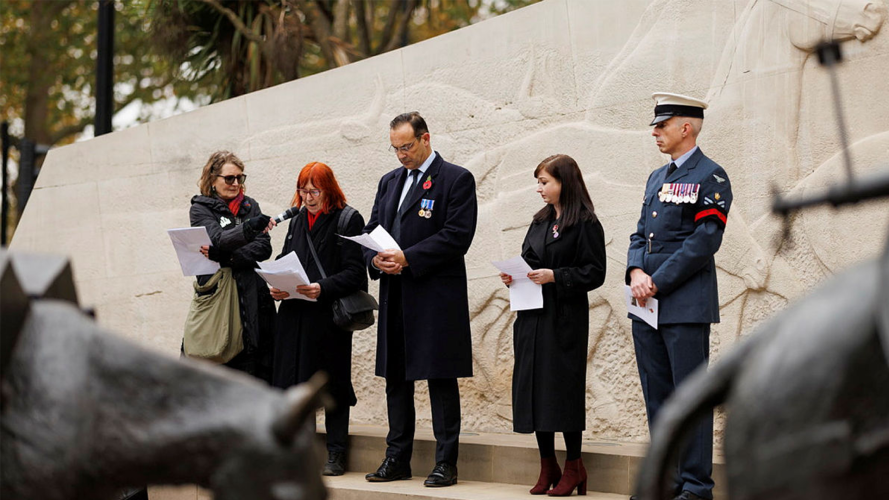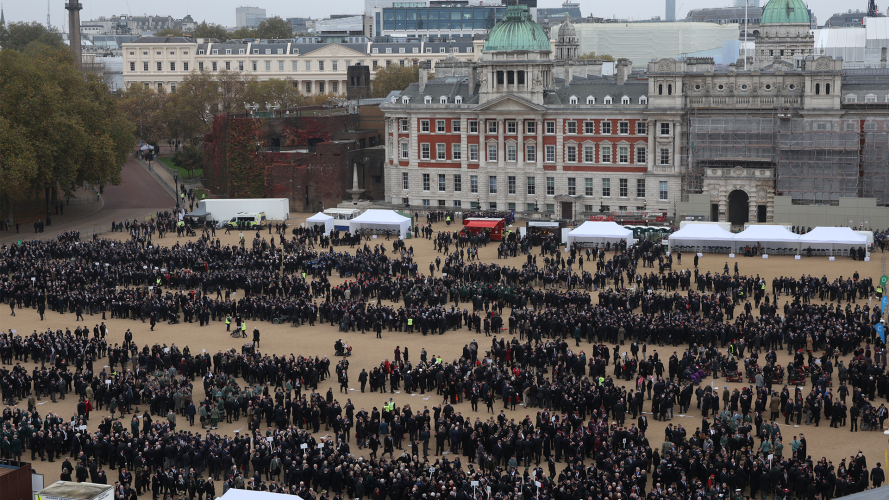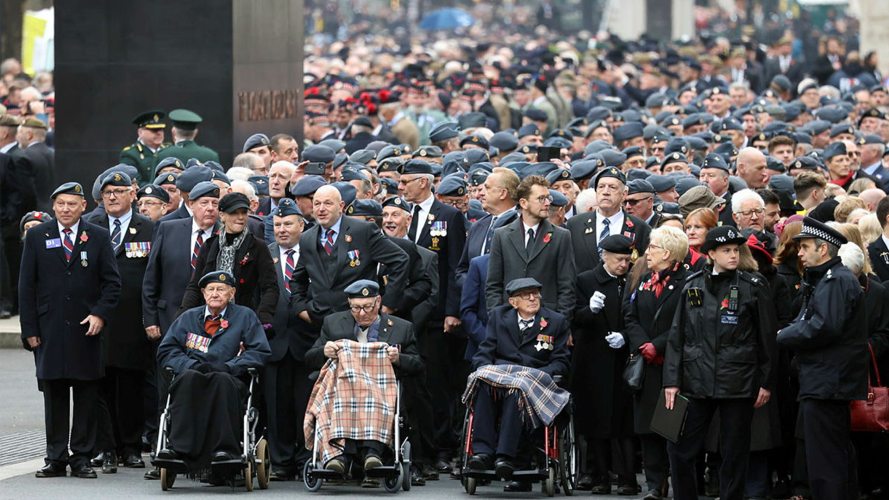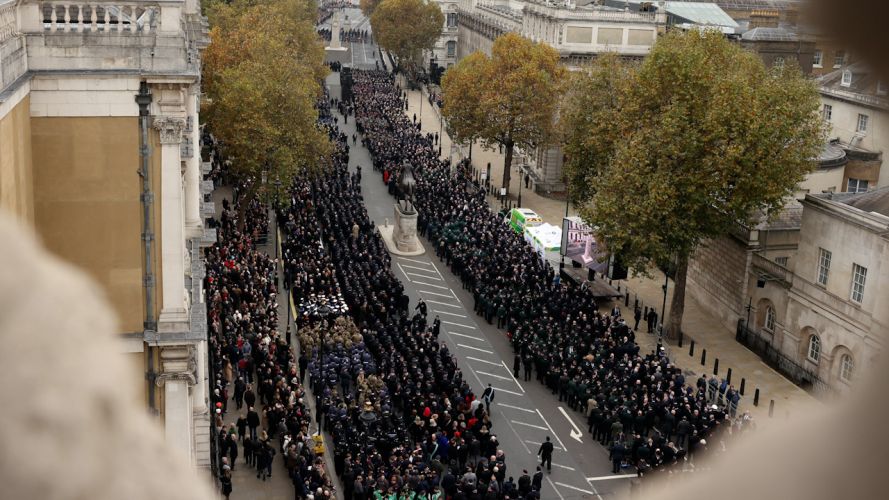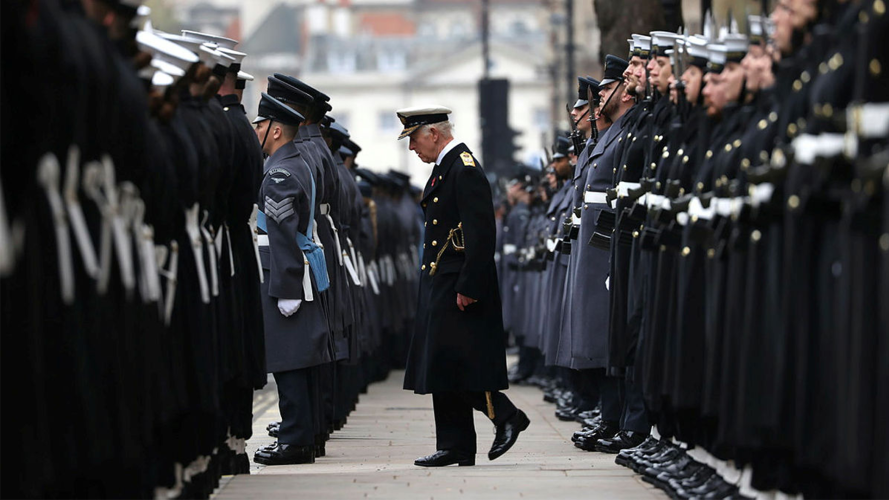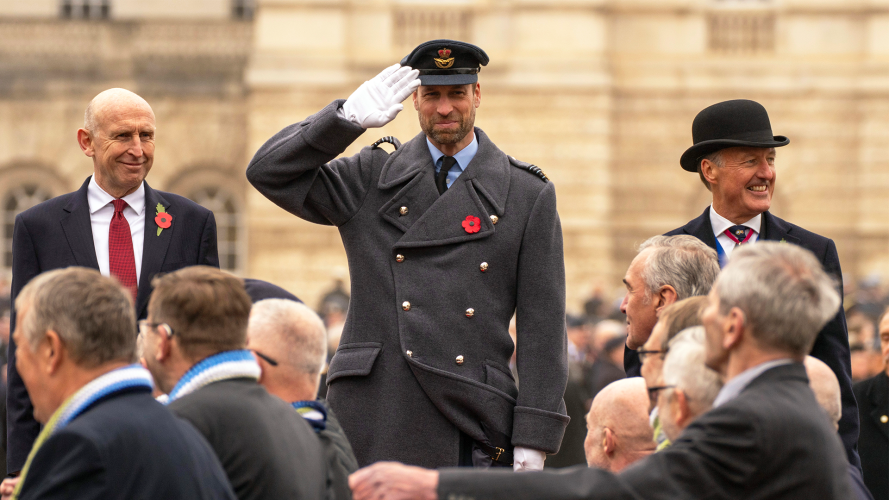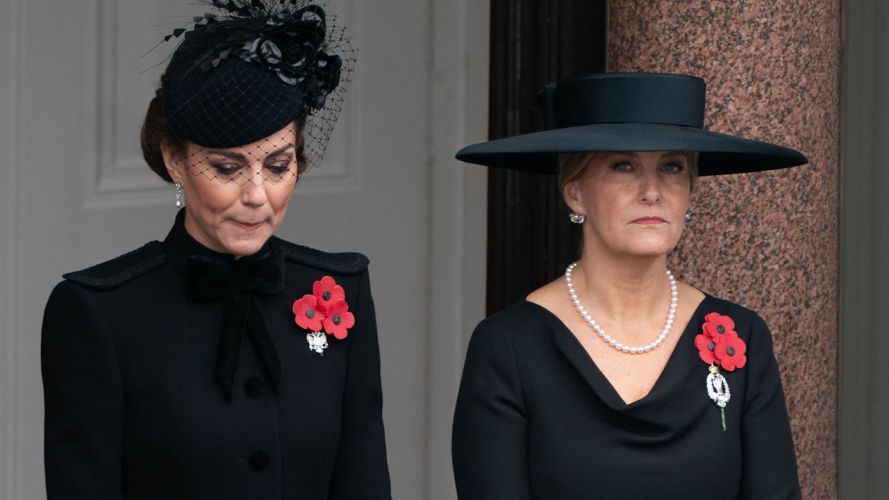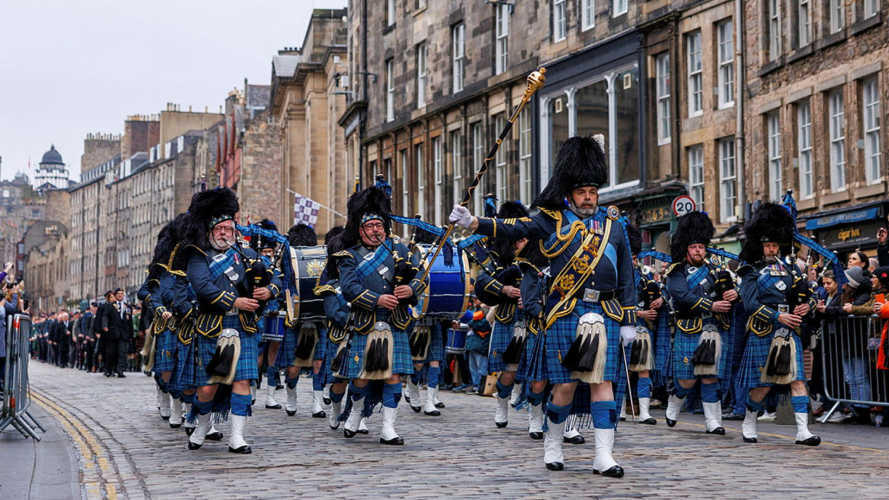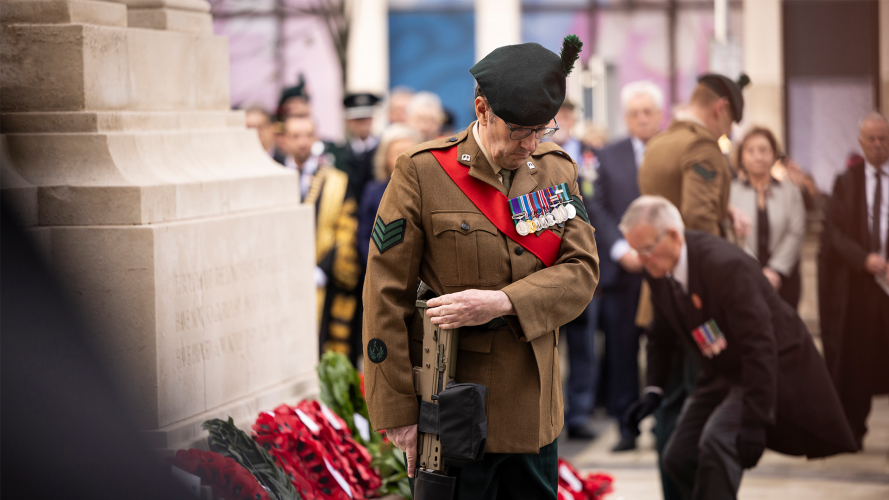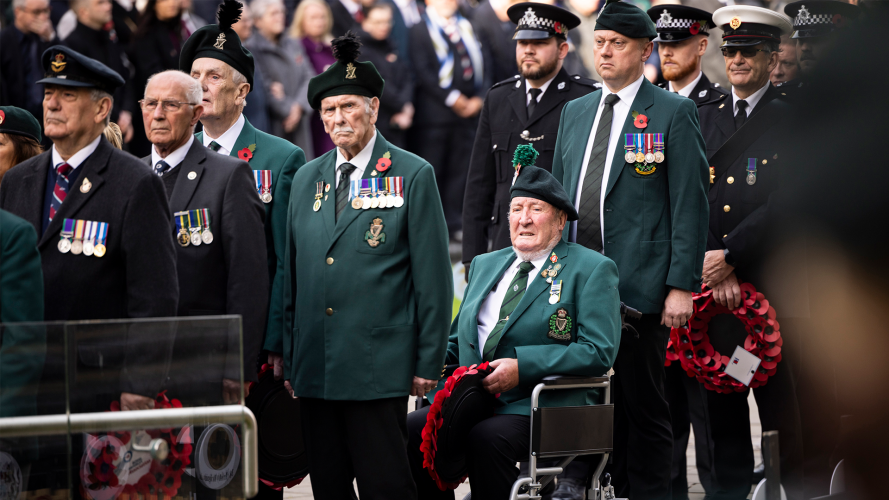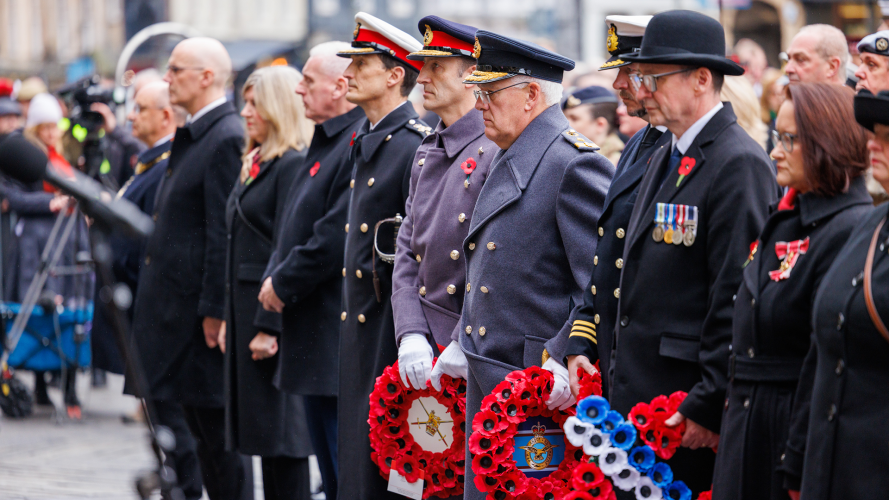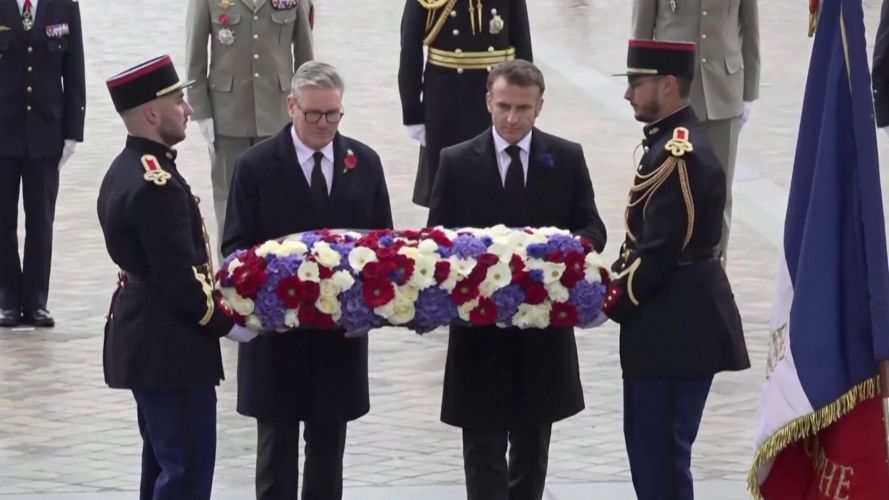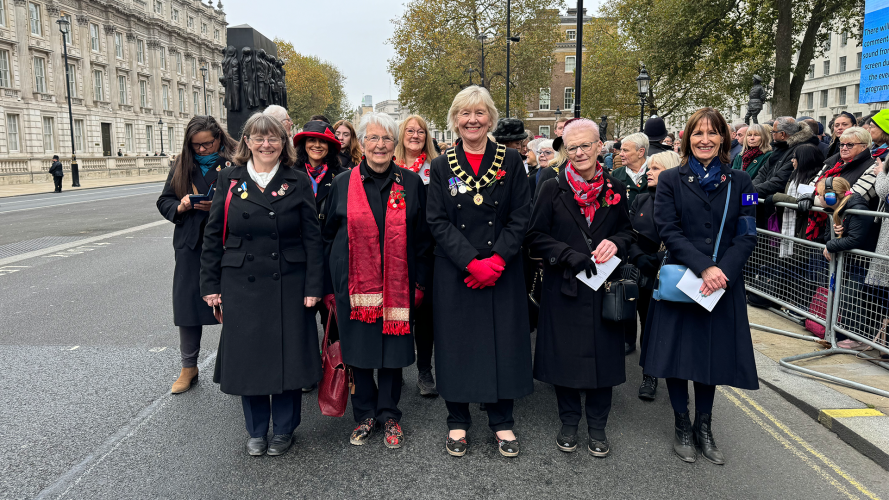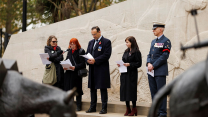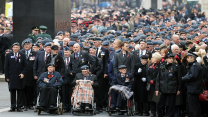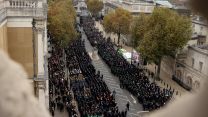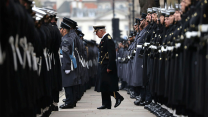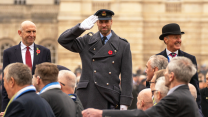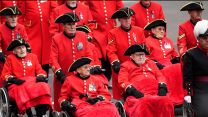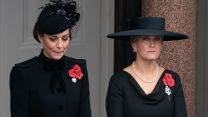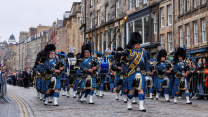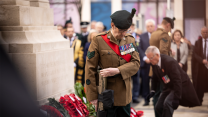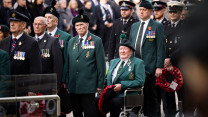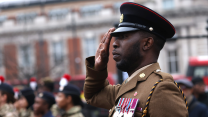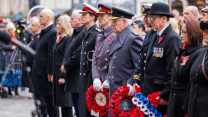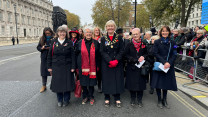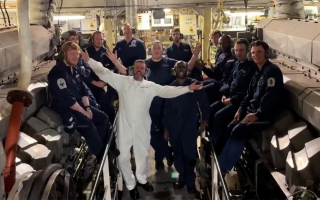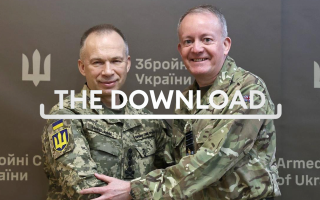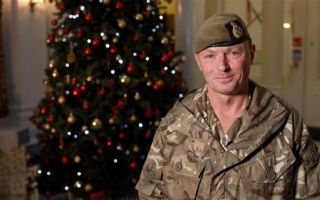In pictures: Royals, veterans, politicians and the public honour the nation's fallen
Thousands of military veterans, serving personnel and members of the public came together to honour all those who gave their lives in the service of their country and the Commonwealth.
The Royal British Legion's Veterans Parade consisted of 10,000 individuals from 326 different Armed Forces and civilian organisations.
Among those marching were people of all ages – from the bereaved children of Scotty's Little Soldiers through to the D-Day veterans of the Spirit of Normandy Trust.
King Charles laid the first wreath at the Cenotaph in recognition of the fallen from conflicts dating back to the First World War, and floral tributes followed from members of the Royal Family, Sir Keir Starmer, other political leaders and foreign diplomats.
The Princess of Wales viewed the Remembrance Sunday service from a government building balcony overlooking the Cenotaph, as she made a rare public appearance following her cancer diagnosis and treatment to mark Armistice Day
A volley from a gun fired by the King's Troop Royal Horse Artillery from nearby Horse Guards Parade rang out to signal the start of the two minutes of silent reflection, punctuated by the sound of London traffic, and another booming blast marked its end.
The King laid his wreath on behalf of the nation after buglers from the Royal Marines played the Last Post.
He wore military dress, as did other royals, his great coat worn over his Admiral of the Fleet uniform, and, after laying his wreath, he saluted.
On Monday, Sir Keir Starmer marked Armistice Day in Paris with French President Emmanuel Macron, while events took place across the UK to commemorate the end of the First World War.
The Prime Minister became the first British premier to attend the armistice ceremony in Paris since Winston Churchill during the Second World War.
Sir Keir and Mr Macron laid a wreath at the Tomb of the Unknown Soldier at the Arc de Triomphe in the French capital.
In the UK, events focused on the National Memorial Arboretum in Staffordshire, with the Duchess of Edinburgh among the guests for the Service of Remembrance.
Sophie read an extract from For The Fallen, a poem by Lawrence Binyon, before observing the two-minute silence at 11am.
The duchess also laid a wreath at the Armed Forces Memorial alongside representatives from the Government and the military.
The War Widows Association held their service of Remembrance on Saturday as per tradition, the day before Remembrance Sunday.
Mr Healey joined them on the parade and at a reception later that day.
By tradition, the widows were not allowed to march on the Sunday.
On Saturday, the group of War Widows would lay a wreath at the Cenotaph in the shape of a cross made of white chrysanthemums. The officials would then remove it and dispose of it.
The War Widows would retrieve the wreath and place it back at the Cenotaph. Eventually, they were allowed to take part in the Sunday march, although the Saturday tradition remains to this day.
